Magic Wands
Last Updated on December 18, 2017 by Abigail Adams
“It is not the wizard that chooses the wand, Harry, it is the wand that chooses the wizard.” This is a line from Harry Potter and the Sorcerer’s Stone. Though true wands of today do not contain the tail of a Phoenix or the heartstrings of a Dragon, they are just as important to a working witch as they are to the characters of the movie. With movies like the Harry Potter series, The Craft, Lord of the Rings and cartoons like the series W.I.T.C.H., more and more people have become interested in “Magic Wands” and magic in general. Go to the internet and pull up “magic wand” and the first 15-20 sites to pop up will be places selling replica’s or targeting the genre of the Harry Potter phenomenon.
But what is a wand, what is its history and lore?
The wand simply put is an energetic tool, which may be used to focus a witch’s intent and energy. The wand can be used to cast circle, bless wines and cakes, direct energy at a specific area or object. The wand may also be used to draw energy in to the witch or towards the spirit of the witch. It is focal point to draw in natural energy or to be used to invoke the Goddess, a conduit between of the Life Force. It is an extension of the witch, like any other tool in the witch’s cabinet. The wand itself cannot perform magic; it will just lie where it is placed until picked up to be used. However, the wand does contain the metaphysical properties of the material it made from, so does have life.
But where did the wand originate? That is a good question that does not necessarily have a scientific answer in history. Most history on wands have come down from verbal tradition, though there are many stories of wands in history and myth, very few have been found and dated, probably due to the fact that especially in Northern cultures, the wand being made of wood, would have decomposed over time.
However, in Egypt, among many artifacts found, Egyptian wands made of hippopotamus ivory have been found that date back to around 2800 B.C. These wands were not of the straight stick shape we in Western Culture are familiar with, but were in fact a fairly flat semi-circle with pictures, symbols and mystical creatures carved on them. These wands have been found in rooms where birthing bricks have been found. It is believed these wands were specifically carved for the time of birthing in order to turn back evil in order to protect the mother and child. The first found forms of this wand had animal heads carved on each end, these heads eventually through time were taken off the wand, making it just a flat semi-circle. Historians believe the specific shape of the wand was actually conceived from a weapon or throwing stick used to kill small birds. The curved stick moved from a practical use to a magical use symbolizing order over chaos.
The Wands of Horus also obviously have connection with Egyptian God Horus. The wands of Horus are in fact a whole lesson unto themselves. They are briefly, hollow cylinders filled with a variety of metaphysical stones used for healing. Egyptian priests of Horus, studied lifetimes to learn the use of these wands, it is believed that higher priests actually used the wands to transverse the worlds of the living and the dead. In many Egyptian sculptures of Pharaoh’s you will see two cylinders in the hands of the Pharaoh, these are the Wands of Horus, they were believed to provide balance, and guidance into the afterlife. Dr. Valery Uvarov rediscovered the secret of the healing properties of the wands. As there is so much information on the wands I would suggest reading “The Wands of Horus” by Dr. Uvarov, or by visiting the following websites: http://wands-of-horus.com/en/ . You can also download Dr. Uvarov’s findings from the website mentioned in a PDF format.
The wand we use today, the straight wand comes from the Northern countries, the Celts, Germans, Norse, etc. In fact in linguistic research, the “cel” in Celts and “ger” in German actually translate into the word “wand”. Both of these cultures use the wand as a symbol of the axis of the solstices. The most known culture in magic and from which many of today’s traditions have come from are the Celts and Druids. Their history goes back to at least 500 B.C. , though other historians say much further back than that. The Druids were the shamanic people of the “Celts”. A step above the normal healers of their time. To become a Druid meant becoming judge, counselor, mediator, and healer besides knowing the works of a shaman. Training took from 12-20 years. Druids used wands along with many other tools. They had a very respectful relationship with nature and a wand would be made from a tree that contained properties of the reason or purpose for which the wand was to be made. Druids were very in sync with nature and would only cut limbs for wands according to the natural pruning season. In some cases a tree could be only cut on a specific day at a specific hour. (I have included in the back of this paper a list of trees and their properties and information on the “fifth element”, provided from Bard Woodcrafts). Druids believed that the tree had a life force called the dryad. The dryad was the spirit of the tree, the essential pattern. It is a living being linked to the tree and grows with it, but at the same time living in the Astral dimension. When a limb falls or was pruned from the tree, this spirit stays in the wood.
After Christianity took over that part of the world and stories were distorted, the wands association with the Druid was that of an “evil” tool used to transform people into animals and used for shape-shifting. Because of negative propaganda by the hierarchy, wands were just as feared as the owner of the wand.
In many Celtic stories of the Tuatha Da Danaan, wands were in fact large parts of the stories and were used to do exactly as stated above, turn people into other creatures, yet in the stories seldom was this done out of spite but to show the person transformed a lesson to be learned. Druids did often in fact carry wands, staffs, rods and/or stangs. These were really symbols of position and authority and way of identification.
In many cultures where Tribes consisting of many different clans. The leader or shaman/ medicine man/healer would carry a decorated staff. These staff’s not only identified the man of position, but by the adornments , carvings and markings showed which clan the man belonged to. A staff can be used the same as a wand as well as weapon of defense. The height of the staff depended on the height of the person carrying it. Pharoah’s and their priests were often depicted with staffs as well as in Biblical History, Moses and Aaron also carried staffs. In both cases the staff identified the carrier and was a tool to perform the magic and miracles of the holders.
In other cultures: Canadian Indian tribes, Haitian Voodoo and some Celtic Traditions, the head of a fallen enemy would be placed on a staff and inserted into the ground outside the village. This was to capture the power of the enemy and to honor the valor of the enemy as well . A staff with a carved representation of a human skull was often used during Samhain and The Day of the Dead to honor the dead.
Many African tribes also used staffs for defense, healing, and divination. When metal was discovered, staffs in African culture took on a deeper meaning of transformation, of metal and earth.
Today many people own staffs, they are a very useful and practical tool. They can be used as a walking stick, used for outside ritual in place of a sword, used for defense if unfortunately the case need be. Staffs are making a comeback into popularity due to movies like Lord of the Rings where Gandolf carries a staff and uses it as a magical tool. Merlin is often depicted with a staff as well.
Rods, another cousin of the wand is a shorter version of the staff, which is about 3 ft in length. It was believed in Egyptian, Islamic, Babylonian, and Jewish magic that a person who carried a rod that had been charged during a storm that had both thunder and lightning, had the power to settle all disputes. Thus giving that person judge and mediation authority. In European lore a rod empowered under the full moon of Samhain carried great authority over spirits of heaven and earth. Other rods were purposely charged for individual events like childbirth. Today, rods are not used or seen often, but are usually painted with the colors of a persons coven and symbolically inscribed. Like the wand it is used to focus intent and energy.
A stang is a 5-6 ft branch with a “Y” at the end. It is most often a ceremonial symbol or centerpiece, symbolizing the magic of “3” or the trinity, such as Mother, Maiden, Crone; Air, Earth, Seal; Body, Mind and Spirit; God, Goddess, Spirit; etc… When used I ritual it is usually placed in the North. Practicing Druids place the Stang in the center. When used they are usually decorated specifically for the rite or ritual.
A similar pole is erected in the center of a Voodoo rite called Ponteau Mitan, dedicated to Damballah.
Another form of a wand is the Caduceus, or the Wand of Hermes. The caduceus is the legendary herald’s wand of the Greek God Hermes (Roman, Mercury). This symbol, a winged staff entwined by twin serpents, is nearly universal, found in Egypt, Mesopotamia, and India, where it is always a symbol of harmony and balance. To the people of Sumer over 4000 years ago, this was the emblem of life, the symbol is said to have power of wealth, prosperity, happiness and dreams, allowing the person carrying the rod of the double serpents to touch the magic of the heavens. In Egypt this was carried by Isis and Anubis. In Greece, this was displayed over healing temples, representing the strength and wisdom of Hermes. In Hindu symbolism the Caduceus is represents the double helix or DNA.
In it’s earliest form, the caduceus appears as a forked rod, the prongs knotted or crossed to form a loop. It was used not only to represent the duality of the Divine, but for the ability of the human to reach the Gods and for the Gods to reach the humans by travelling up and down the world axis. As time went by the rod was entwined with two serpents, heads facing each other as a symbol to settle arguments. The wings are symbolic of flying messengers, like Hermes and Mercury. To alchemists, the caduceus is still considered the sign of the planet and element Mercury and means, “that which poisons can also heal”. Today this symbol has been adopted by the medical field and can be seen on ambulances, in doctor’s offices and hospitals.
In Conclusion, the wand is a tool that has been used through the ages, in many cultures, in various forms, shapes and sizes. But in essence the wand is still simply an extension of the witch, a tool historically and ancestrally linked to the path most of us follow today. There is no magic wand that has the instant fix many are looking for. There is no Fairy God Mother with a “bibity, bobity, boo” going to fix everything for us. But knowing how to use the wand to direct energy and intent is an important lesson for the witch of today. Knowing the metaphysical qualities of the woods, metals, crystals, gems and other materials used in today’s wands only helps us to more focus our intentions and spin magic. Wands and it’s cousins are also a connection to the Tree of Life, the origins of existence. They are the rawness of Goddess, nature, and the elements available for a witch’s working, to make a direct magical current between her and Goddess.

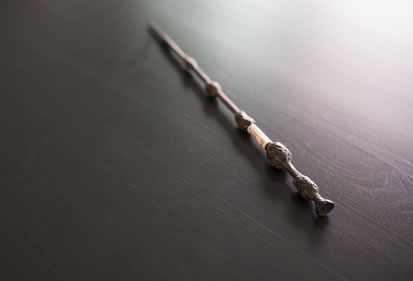
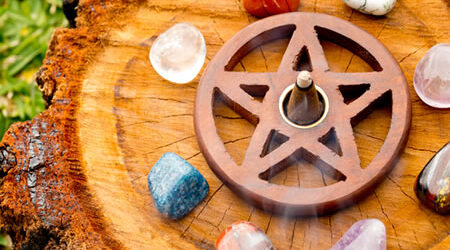


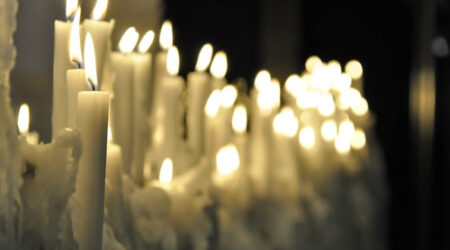
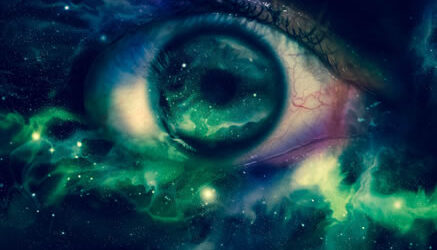

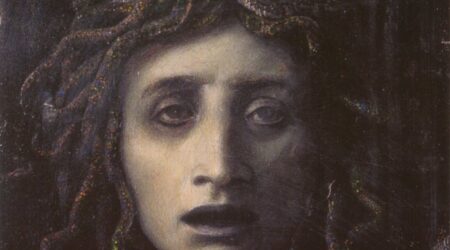
Leave a Reply